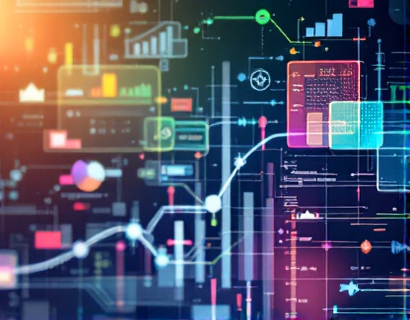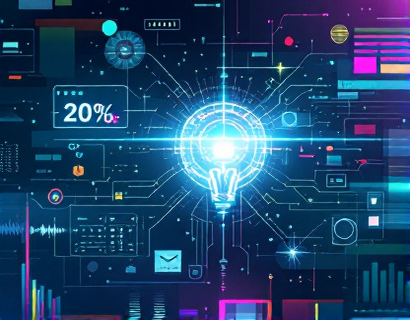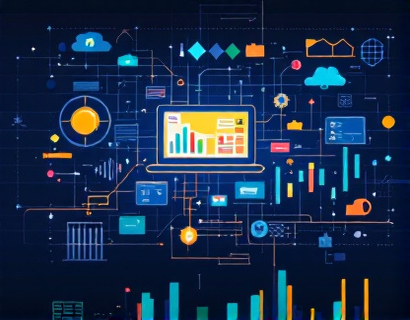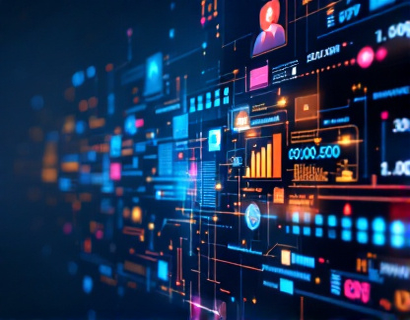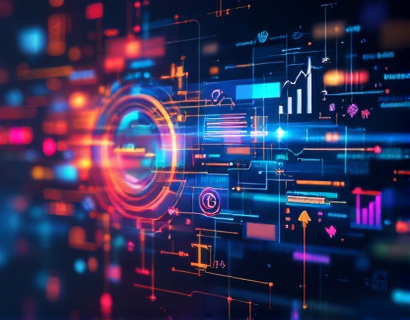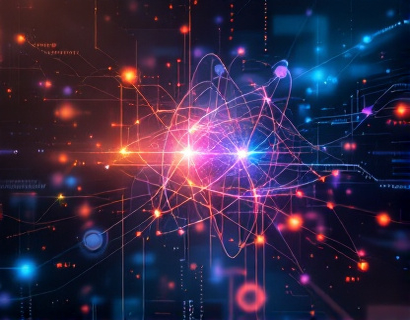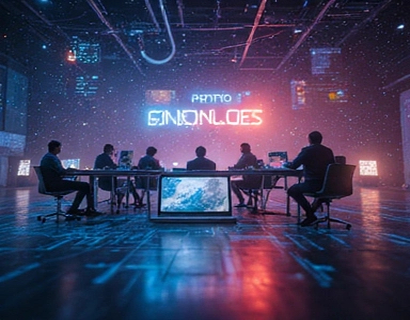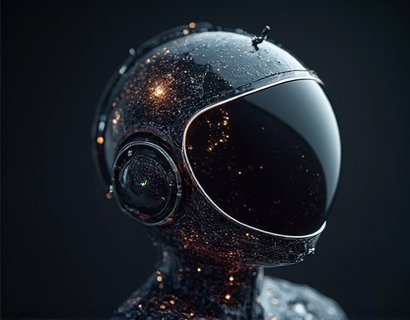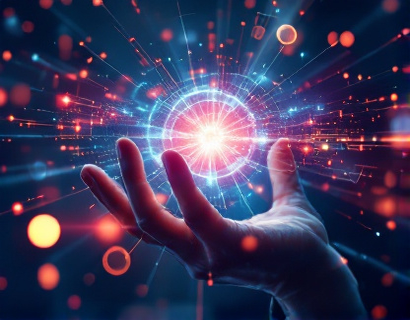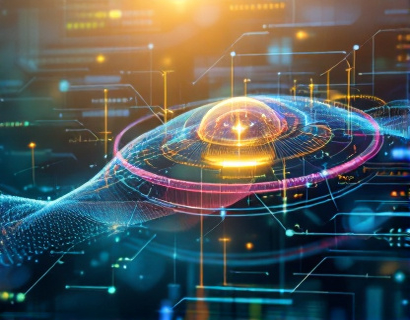AI and Crypto Synergy: Elevating Productivity in the Digital Age
The convergence of artificial intelligence (AI) and cryptocurrency is revolutionizing the digital landscape, offering unprecedented opportunities for enhancing productivity and efficiency. This synergy is not just a technological curiosity but a practical solution for modern professionals seeking advanced tools to streamline their workflows and stay ahead in a rapidly evolving market. As we delve into the intersection of AI and cryptocurrency, we will explore how these technologies can be combined to create smarter, more efficient tools that redefine the way we work and interact in the digital realm.
Understanding the Basics
To fully appreciate the potential of AI and cryptocurrency, it's essential to understand the fundamental concepts of each. Artificial intelligence refers to the simulation of human intelligence processes by machines, particularly computer systems. These processes include learning (the acquisition of information and rules for using it), reasoning (using rules to reach approximate or definite conclusions), and self-correction. AI technologies such as machine learning, natural language processing, and computer vision are already transforming various industries, from healthcare to finance.
Cryptocurrency, on the other hand, is a digital or virtual currency that uses cryptography for security. It operates on a decentralized network, typically a blockchain, which ensures transparency and immutability. Bitcoin, the first and most well-known cryptocurrency, paved the way for thousands of alternative coins (altcoins) and tokens, each with unique features and use cases. The decentralized nature of cryptocurrency eliminates the need for intermediaries, reducing transaction costs and increasing efficiency.
AI in Cryptocurrency: Enhancing Security and Efficiency
One of the most significant applications of AI in the cryptocurrency space is in enhancing security. Cryptocurrency exchanges and wallets are prime targets for cyberattacks due to the high value of digital assets. AI algorithms can detect and prevent fraudulent activities by analyzing patterns and anomalies in transaction data. Machine learning models can be trained to identify suspicious behavior and automatically trigger security measures, such as two-factor authentication or transaction halts, to protect user assets.
Beyond security, AI can optimize the trading process. Algorithmic trading powered by AI can analyze vast amounts of market data in real-time, identifying trends and making informed decisions at speeds unattainable by human traders. These AI-driven trading bots can execute trades based on predefined criteria, reducing emotional decision-making and increasing the likelihood of profitable outcomes. Additionally, AI can predict market movements by analyzing historical data, news sentiment, and other relevant factors, providing traders with valuable insights.
Cryptocurrency as a Fuel for AI
The relationship between AI and cryptocurrency is not one-sided. Cryptocurrency itself can serve as a powerful resource for AI development. The decentralized and secure nature of blockchain technology ensures that AI models can be trained on a vast, tamper-proof dataset. This is particularly important for AI systems that require extensive data to function effectively, such as those used in natural language processing or image recognition.
Moreover, the use of cryptocurrency in AI projects can provide a more equitable and accessible funding model. Traditional funding for AI research often comes with stringent conditions and limited access. Cryptocurrency, with its decentralized funding mechanisms like initial coin offerings (ICOs) and decentralized finance (DeFi) platforms, can democratize access to capital. This allows researchers and developers to fund their projects without the bureaucratic hurdles associated with traditional funding sources.
Smart Contracts: Automating Complex Processes
Smart contracts, self-executing contracts with the terms of the agreement directly written into code, are another area where AI and cryptocurrency intersect. These contracts run on blockchain networks and automatically enforce and execute the terms of an agreement when predefined conditions are met. AI can enhance smart contracts by adding layers of intelligence to the execution process.
For instance, AI can be used to predict and adapt to changing conditions in real-time, ensuring that smart contracts remain effective and relevant. In supply chain management, AI can track the movement of goods and automatically trigger smart contracts to release payments or update inventory levels. This level of automation reduces manual intervention, minimizes errors, and increases overall efficiency.
Decentralized Applications (DApps) and AI
Decentralized applications (DApps) are applications that run on a blockchain network, leveraging its decentralized and transparent nature. When combined with AI, DApps can offer highly sophisticated and intelligent services. For example, a decentralized finance (DeFi) platform can use AI to provide personalized financial advice, optimize investment portfolios, and detect fraudulent activities.
AI-powered DApps can also revolutionize the way we interact with digital content. Content creation and distribution platforms can use AI to curate and recommend content based on user preferences, ensuring a more engaging and personalized experience. Additionally, AI can automate content moderation, reducing the burden on human moderators and maintaining a high standard of quality and safety.
Enhancing Productivity with AI and Crypto Tools
The synergy between AI and cryptocurrency is not limited to theoretical applications; it is already being leveraged to create practical tools that boost productivity for modern professionals. One such tool is a decentralized productivity platform that uses AI to manage tasks, schedule meetings, and automate routine tasks. This platform can integrate with various blockchain-based services to ensure secure and transparent data sharing among team members.
Another example is an AI-driven virtual assistant powered by cryptocurrency. This assistant can handle a wide range of tasks, from setting reminders and sending notifications to processing payments and managing contracts. The use of cryptocurrency ensures that transactions are secure and cost-effective, while AI ensures that the assistant operates efficiently and learns from user interactions to improve over time.
Challenges and Considerations
While the potential of AI and cryptocurrency synergy is vast, there are several challenges and considerations to keep in mind. One of the primary concerns is regulatory compliance. The cryptocurrency space is still largely unregulated, and the integration of AI adds another layer of complexity. Ensuring that AI-driven solutions comply with existing regulations and future laws is crucial to avoid legal issues and maintain user trust.
Another challenge is the technical expertise required to develop and maintain these advanced systems. Both AI and blockchain technologies are complex and require a specialized skill set. Organizations and individuals looking to leverage this synergy must invest in training and hiring professionals with the necessary expertise.
Future Prospects
The future of AI and cryptocurrency synergy is bright, with numerous potential developments on the horizon. As AI continues to advance, we can expect more sophisticated and intuitive applications in the cryptocurrency space. For instance, AI-powered chatbots on blockchain-based platforms could provide real-time customer support, handling queries and transactions with human-like interaction.
Furthermore, the integration of AI with other emerging technologies, such as the Internet of Things (IoT) and 5G networks, will create even more powerful and interconnected systems. These integrations can lead to smarter cities, more efficient supply chains, and enhanced user experiences across various industries.
In conclusion, the synergy between AI and cryptocurrency is a transformative force in the digital age. By combining the strengths of both technologies, we can create innovative tools that significantly enhance productivity and efficiency. For tech innovators and early adopters, this intersection offers a wealth of opportunities to develop cutting-edge solutions that can redefine the way we work and live.





